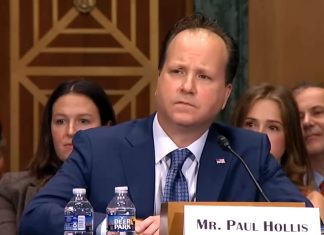 President Trump’s order to stop making "pennies" is not the first time the federal government discontinued the production of a coin denomination for use in circulation, explains veteran rare coin dealer and award-winning numismatic author Dr. Michael Fuljenz, president of Universal Coin & Bullion (www.UniversalCoin.com) in Beaumont, Texas.
President Trump’s order to stop making "pennies" is not the first time the federal government discontinued the production of a coin denomination for use in circulation, explains veteran rare coin dealer and award-winning numismatic author Dr. Michael Fuljenz, president of Universal Coin & Bullion (www.UniversalCoin.com) in Beaumont, Texas.
"The last time that happened was 92 years ago in 1933, but it happened several times in the 1800s with the halt in production of coins that were no longer useful or not popular, such as half-cents, two-cent coins, and the short-lived twenty-cent denomination coins," said Fuljenz.
"Major countries around the world from Canada to Sweden to Australia have eliminated their lowest denomination coins and it was time for the United States to stop making pennies," he stated.
Technically, the U.S. actually does not make pennies.
"The official designation is cent. The common terms ‘penny’ and ‘pennies’ date back to colonial times when English pennies were in circulation. The first U.S. one-cent denomination coins, made of copper and about the size of a modern quarter-dollar, were struck for circulation starting in 1793. The cent was reduced to the size we have today in 1856, and Abraham Lincoln has appeared on the front of U.S. cents since 1909," explained Fuljenz.
Discontinued U.S. circulating coin denominations are:
- Half cents, made of copper, were produced from 1793 to 1857.
- Two-cent denomination copper coins were struck from 1864 to 1873, and the 1864-dated two-cent pieces were the first circulating U.S. coins to have the motto, IN GOD WE TRUST.
- Three-cent denomination coins, some made of silver, later made of nickel, were produced from 1851 to 1889.
- Twenty-cent denomination silver coins were only made from 1875 to 1878.
- Gold coins in denominations of $2.50 ("Quarter Eagle"), $5 ("Half Eagle"), $10 ("Eagle") and $20 ("Double Eagle") were made for circulation at various times from 1795 to 1933. There were also gold $1 denomination coins made from 1849 to 1889.
"U.S. Lincoln one-cent denomination coins used to be composed of 95 percent copper, however, since 1982 have been made of 97.5 percent zinc with a 2.5 percent plating of copper," explained Fuljenz. "The United States Mint Director Ventris Gibson told me in January that the cost of making one penny has now grown to over four cents each."
The cover story by Fuljenz in the February-March 2025 edition of COINage Magazine, "Do Pennies Make Sense," explains how eliminating one-cent coins would save taxpayers $1 billion a decade and there’s been bi-partisan support for many years to eliminate pennies.
Fuljenz was the 2021 American Numismatic Association Dealer of the Year. His weekly Fuljenz Metals Market Report (www.MikeFuljenz.com) newsletters and his crusading efforts on behalf of consumer/investor protection and education have earned more than 70 prestigious awards from professional journalism and numismatic organizations, such as the Press Club of Southeast Texas, the American Numismatic Association, the Professional Numismatists Guild, and the Numismatic Literary Guild.
For additional information about Universal Coin & Bullion, visit www.UniversalCoin.com or call (800) 248-2223.





